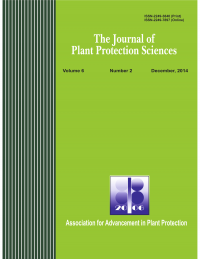Biology of Dichromia sagitta (Fabricius) (Noctuidae: Lepidoptera), a serious pest of Indian ipecac, Tylophora indica
Nilesh Suresh Gole and Bijan Kumar Das
ABSTRACT
Indian ipecac, Tylophora indica (Burm. f.) Merr. commonly known as dumvel or antomul, is an important medicinal plant in the family Asclepiadaceae, indigenous to India. In West Bengal, we observed the herb to be heavily infested by a defoliator pest, Dichromia sagitta (Fabricius) (Noctuidae: Lepidoptera). A study was conducted in the field and laboratory of All India Coordinated Research Project on Medicinal & Aromatic Plants and Betelvine (AICRP on MAPB) at Bidhan Chandra Krishi Viswavidyalaya (BCKV), Kalyani, Nadia, West Bengal during 2010-2011 on seasonality, extent of damage and biologoy of D. sagitta on T. indica. The larvae were active almost throughout the year, fed voraciously on leaves and flowers causing extensive damage to T. indica during June and December. Eggs were laid singly or in batch of 2-3 on younger leaves (mostly on under surface) or on young shoot tips. Life cycle was completed in 41-46 days during January- February and 26-32 days during June-July. There were several overlapping generations in a year. Descriptions of different life stages have been made. Adaptive behaviour of D. sagitta and its interaction with toxic host plant have been discussed critically.
To share on other social networks, click on any share button. What are these?






